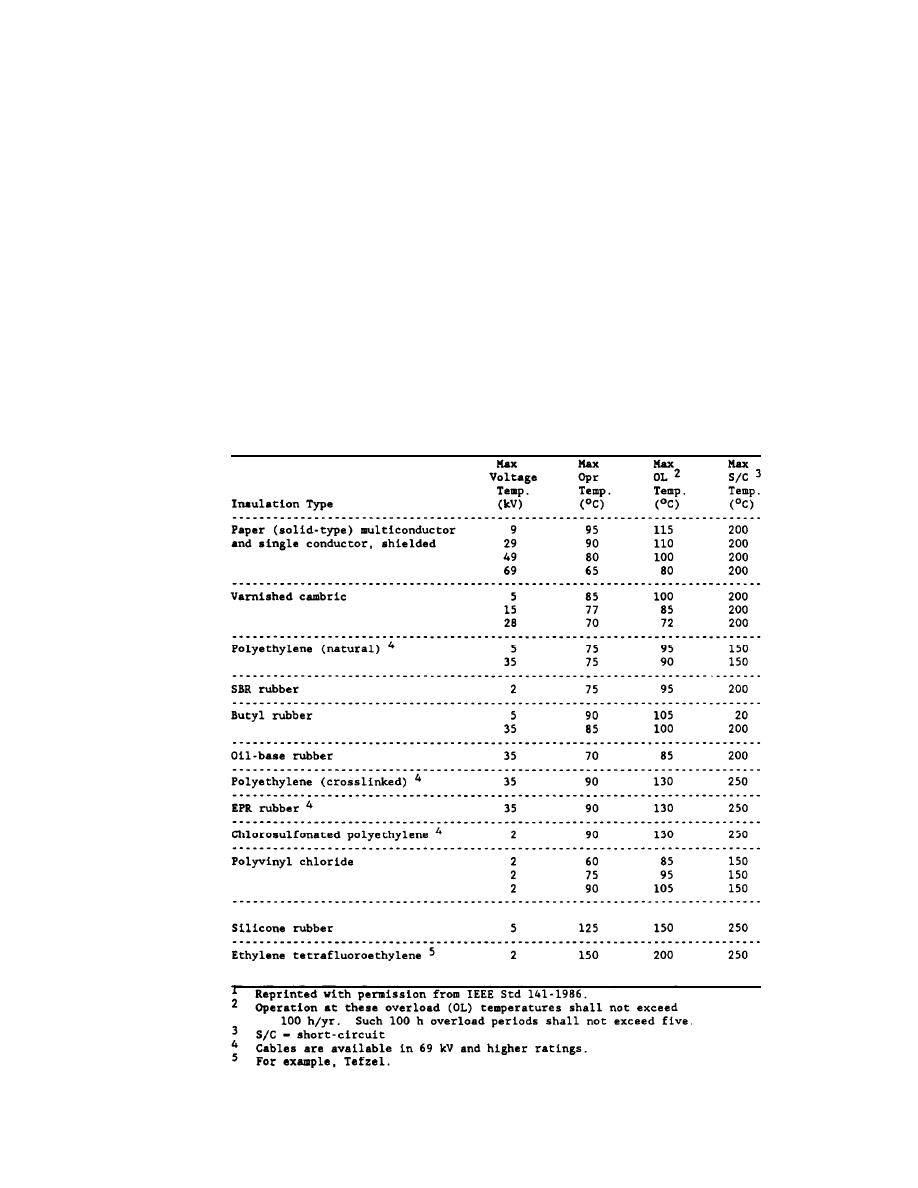
TM
5-811-1/AFJMAN
32-1080
exposed to humidity changes occurring inside out-
cable with a fireproofing tape, spraying the cable
with a foreproofing coating, or installing fire stops
door equipment. Class 3 terminations, with their
exposed length in addition to the exposed end, can
in the manhole. Medium-voltage cables and con-
ductors in manholes that are taped or coated with
be more difficult to maintain plus more dangerous
a fireproofing material will be taped or coated for
to maintenance personnel. Since the use of the
their entire length on an individual cable basis.
more expensive Class 1 type causes an almost
unnoticable overall cost increase in the provision
Figure 7-1 shows cable fireproofing details for a
of a medium-voltage cable installation, only Class
taped installation. Polymeric elastomer tapes will
1 terminations will be used. Either taped or
be used. Asbestos tapes are not permitted. Where
cables have been lubricated to enhance pulling
preformed Class 1 terminations are acceptable.
into ducts, the lubricant will be removed from
Use of the next higher BIL rating in contaminated
cables exposed in the manhole before fireproofing.
areas is not recommended, as it is preferable to
g. Insulation tests. Cable testing will be speci-
have a cable failure at the termination rather
fied to be performed and successfully completed for
than within the cable length.
f. Fireproofing. High current arcs can cause
all medium-voltage cable installations. Cable test-
ing will include the testing of the adequacy of all
heat or even flames which can destroy cables
cable splices and terminations, as applicable. Ca-
adjacent to the arc. To limit damage, cables are
bles will be disconnected from equipment during
often fireproofed in manholes and vaults. Fire-
the testing process. The first testing of new cables
proofing should be limited to cables rated above
is performed by the cable manufacturer at the
600 V. Fireproofing methods include wrapping the
Figure 7-1. Fireproofing of Insulated Cables.
7-5



 Previous Page
Previous Page
